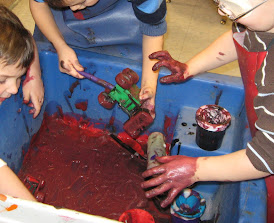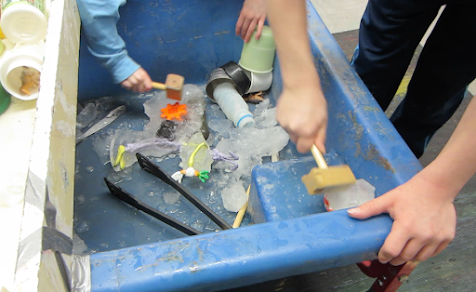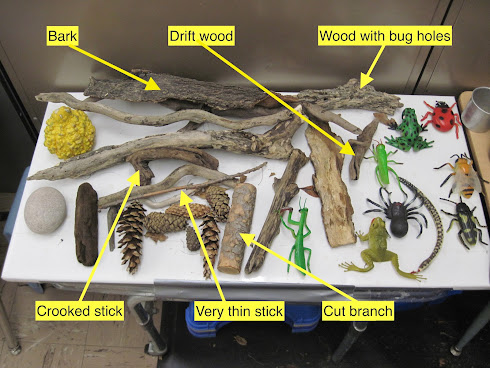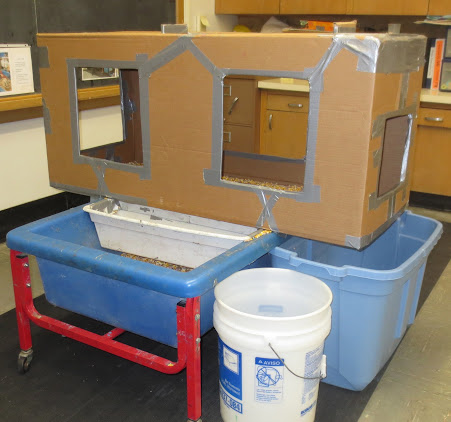Because I am often asked what materials I used in my sand and water table, I will write a series of posts about those materials. In a way, I have already started to introduce some of those materials in my most recent posts about two of my favorite materials: sticks and rocks.
Let me backtrack with a post about one of the most elemental materials for the sensory table, namely water. However, when I think of water, I think about how varied that material can be.
First of all, there is just plain old water that one gets from the faucet. It was never enough for me to just have water and cups and bottles for pouring and filling. I always felt that children would tire of that setup rather quickly. Instead, I would add a construction to the sensory table to invite children to explore the properties of water. For instance, one of the most dynamic apparatus was a large PVC pipe with funnels that was oriented on a slant so when the children poured water into a funnel, the water would exit the end of the pipe into a tub next to the table.
That may sound simple, but there were some serious physics going on there. Namely, the lateral force of water poured into the pipe through the funnel carried buoyant objects out the pipe. Of course, the children did not have words for their physics experiments, but never the less, they were gaining important knowledge about the properties of water. Back in 2011, I wrote a post about more ways children discovered some of the properties of water, specifically water pressure and hydraulics.
To offer the children a little different experience with water, I sometimes used liquid water color to color the water. This was especially useful for the children to tract the flow of water though clear plastic tubing.
I wrote a post back in 2015 about the different tracking strategies the children used to track the the water through the tubes here. And wouldn't you know it, there was even a little bit about hydraulics again.
To offer children yet a different experience with water, I often added a little dish soap to the water. That made it possible for the children to create suds. Below, when the child poured water into the tray, the water dropping through the holes in the tray agitated the soap and water to produce suds.
Suds was a fantastic material. One of the properties that the children discovered was that suds adhered to a lot things, like the hands and face.
Suds mixed with paint offered a unique experience for the children to mix colors, paint objects---including themselves---and generally make a beautiful mess.
I live in Minnesota. That means water often took on a different state in the winter, namely snow. A few times each winter I would bring the snow into the sensory table for the children to explore. Because the snow was inside, the children could experience the snow without heavy coats and mittens. Instead, they got up close and personal by handling the snow with their bare hands.
Snow was also a great medium on which to paint because it offered the children a bright white canvas. (Notice how the simple tray spanning the width of the table held the children's painted snow creations above the table of snow and even showcased those very creations.)
There was one more state of water that the children got to experience at my sensory table, namely ice. Again, this was usually a material that I set out in the winter. The usual invitation to explore the ice took the form of freezing things in ice and offering tools to the children to extract those things frozen in ice.
Water in the water table was so much more for me than cups for pouring and filling bottles and and other containers. It was observing the children experiencing the different states of water with many different setups. Those setups exponentially increased children's exploration of water and its properties.
This post has only scratched the surface of the rich possibilities for children experimenting with water in different states and with different setups.
Next up: sand.




















































